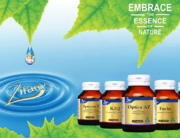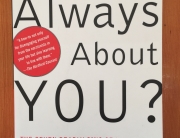 Phthalates are a class of toxic chemicals that are used as softeners or lubricants in products that we use every day and are the most commonly used plasticizers in the world. These chemicals are commonly used with PVC, a known carcinogen, and some other chemicals to make cosmetics and personal care products, medical devices, food and water containers, footwear, solvents, wires and cables, automotive components and children’s toys1,2.
Phthalates are a class of toxic chemicals that are used as softeners or lubricants in products that we use every day and are the most commonly used plasticizers in the world. These chemicals are commonly used with PVC, a known carcinogen, and some other chemicals to make cosmetics and personal care products, medical devices, food and water containers, footwear, solvents, wires and cables, automotive components and children’s toys1,2.
Questions have been raised over the safety of the use of phthalates. Studies have proven that of the 20 types of phthalates commonly used, some are detrimental to our health, with children being more easily affected than adults3.
Babies and young children are at higher risk because of their extensive chewing or sucking on toys. Research was conducted by Australia’s National Industrial Chemicals Notification and Assessment Scheme (NICNAS) into children’s plastic products. It found that if levels of DEHP, a common phthalate were higher than 1%, there was an increased risk for reproductive system toxicity in children up to 36 months of age who chew and suck objects on a recurrent basis for more than 40 minutes per day1.
As babies and toddler are still rapidly growing and their nervous system maturing they are at higher risk for the harmful effects of phthalates. Since 2011, Australia has banned children’s toys, childcare articles, eating utensils and plates containing DEHP in excess of 1%.
Di(2-ethylhexyl) phthalate in particular, is listed in Tox Town, the US National Library of Medicine web site, as a substance “reasonably anticipated to be a human carcinogen”. Male newborn babies who had medical tubes or other plastic devices inserted, especially for feeding, breathing or medication have been found to suffer from adverse effects2. Recently, research has shown that exposure to phthalates is associated with obesity in young children, including increased body mass index (BMI) and waist circumference3.
Another recent study linked prenatal exposure to phthalates with mental, motor and behavioral problems, including ADHD, in the children of these mothers. Experts expressed alarm that blood levels of phthalates in people, more so children, is higher than the safe limits. Women in the age group of 20-40 were also found to have as much as 45 times more phthalates in their body than the safe limit.
Phthalates increase the risk for the following health conditions2:
- Allergies
- Asthma
- Birth defects in the baby
- Cancers (breast, ovaries and prostate) in children whose mothers had prenatal exposures
- Fertility problems for both men and women
- Cardiovascular diseases
- Insulin resistance and obesity
- Miscarriage
- Learning, memory and mental disabilities in children
- Prostate gland enlargement
- Decreased sperm count in adult men
- Testicular cancer
Though phthalates are no longer manufactured in Australia1, many products containing these chemicals are still all around us. Here are some tips to reduce exposure levels:
- Avoid usage of plastics, as much as possible, in particular those with the numbers #3, #6, #7 and #8 as these contain phthalates or PVC. Avoid gladwrap where possible and if using plastic containers look for those with #5.
- Replace plastic containers with ceramic or glass for food storage containers. I use Lock n lock glass containers wherever possible. Also use glass, ceramics or stainless for your water and any other drinks.
- Use only gloves made of natural rubber or latex because PVC gloves most likely contain both PVC and phthalates.
- Buy and give baby toys and utensils which are guaranteed to be phthalate-free.
- Go organic. Buy certified organic products for your food and personal care needs because they are phthalate-free and better for your wellbeing.
Completing a comprehensive detox at least once a year will help your body remove pthalates and reduce your chemical load – my October Community Detox will be kicking off in just over 10 days!
References:
1 http://www.productsafety.gov.au/content/index.phtml/itemId/972486
2 http://www.vitalhealthzone.com/health/articles/bisphenol_A_BPA_and_phthalates.html












































































































































